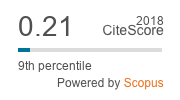O Papel da Atenção na Manutenção da Informação Visuoespacial na Memória Operacional
DOI :
https://doi.org/10.1590/0102.3772e3729Mots-clés :
Memória operacional, Retrodica, Atenção, VisuoespacialRésumé
A memória operacional ainda apresenta várias questões pouco compreendidas. O presente estudo teve como objetivo investigar a eficiência de retrodicas atentivas no processo de manutenção da informação visuoespacial na memória operacional. Foram delineados dois experimentos, definidos por uma tarefa única (memorização) ou dupla (memorização e busca visual). Os resultados sugerem que o efeito da retrodica informativa proporcionou uma melhora na probabilidade de recuperação da informação memorizada na presença ou na ausência da tarefa de busca visual, mesmo em condições que a busca era iniciada 50 ms após a apresentação da retrodica. Esse resultado é discutido em termos de um processo de múltiplas etapas no processo de alocação da atenção na memória operacional visual.
Téléchargements
Références
Allen, R. J., Baddeley, A. D., & Hitch, G. J. (2006). Is the binding of visual features in working memory resource-demanding?Journal of Experimental Psychology: General , 135(2), 298-313. https://doi.org/10.1037/0096-3445.135.2.298
Allen, R. J., Baddeley, A. D., & Hitch, G. J. (2014). Evidence for two attentional components in visual working memory. Journal of Experimental Psychology: Learning, Memory, and Cognition, 40(6), 1499-1509. https://doi.org/10.11037/xlm0000002
Baddeley, A. D., & Hitch, G. (1974). Working memory. Psychology of Learning and Motivation, 8, 47-89. http://dx.doi.org/10.1016/S0079-7421(08)60452-1
Baddeley, A. (1986). Working memory. Oxford Psychology Series.
Baddeley, A. (1996). Exploring the central executive.The Quarterly Journal of Experimental Psychology: Section A,49(1), 5-28.
Baddeley, A. (2000). The episodic buffer: a new component of working memory? Trends in Cognitive Sciences, 4(11), 417-423. https://doi.org/10.1016/S1364-6613(00)01538-2
Baddeley, A. (2007). Working memory, thought, and action (Vol. 45). OUP Oxford.
Carlson, T. A., Hogendoorn, H., & Verstraten, F. A. (2006). The speed of visual attention: What time is it?. Journal of Vision, 6(12), 6-6.
Chakravarthi, R., & VanRullen, R. (2011). Bullet trains and steam engines: Exogenous attention zips but endogenous attention chugs along. Journal of Vision, 11(4), 12-12.
Galera, C., Guimarães, L. S., Rossini, J. C., & Santana, J. J. R. A. (2016) . A recuperação da informação visual baseada na localização e nas características visuais dos objetos. Estudos de Psicologia (Natal), 21(3), 228-238. https://doi.org/10.5935/1678-4669.20160022
Griffin, I. C., & Nobre, A. C. (2003). Orienting attention to locations in internal representations. Journal of Cognitive Neuroscience, 15(8), 1176-1194. https://doi.org/ 10.1162/089892903322598139
Hollingworth, A., & Maxcey-Richard, A. M. (2013). Selective maintenance in visual working memory does not require sustained visual attention.Journal of Experimental Psychology: Human Perception and Performance , 39(4), 1047-1058. https://doi.org/10.1037/a0030238
Johnson, J. S., Hollingworth, A., & Luck, S. J. (2008). The role of attention in the maintenance of feature bindings in visual short-term memory.Journal of Experimental Psychology: Human Perception and Performance , 34(1), 41-55. https://doi.org/10.1037/0096-1523.34.1.41
Landman, R., Spekreijse, H., & Lamme, V. A. F. (2003). Large capacity storage of integrated objects before change blindness. Vision Research, 43, 149-164. https://doi.org/10.1016/S0042-6989(02)00402-9
Lepsien, J., & Nobre, A. C. (2006). Cognitive control of attention in the human brain: Insights from orienting attention to mental representations. Brain Research, 1105(1), 20-31. https://doi.org/10.1016/j.brainres.2006.03.033
Lepsien, J., & Nobre, A. C. (2007). Attentional modulation of object representations in working memory.Cerebral Cortex,17(9), 2072-2083. https://doi.org/10.1093/cercor/bhl116
Lepsien, J., Griffin, I. C., Devlin, J. T., & Nobre, A. C. (2005). Directing spatial attention in mental representations: Interactions between attentional orienting and working-memory load. Neuroimage, 26(3), 733-743. https://doi.org/10.1016/j.neuroimage.2005.02.026
Logie, R. H. (1995). Visuo-spatial working memory. Erlbaum.
Logie, R. H. (2011). The functional organization and capacity limits of working memory. Current Directions in Psychological Science, 20(4), 240-245. https://doi.org/10.1177/0963721411415340
Makovski, T., & Jiang, Y. V. (2007). Distributing versus focusing attention in visual short-term memory.Psychonomic Bulletin & Review,14(6), 1072-1078. https://doi.org/10.3758/BF03193093
Makovski, T. (2012). Are multiple visual short-term memory storages necessary to explain the retro-cue effect?Psychonomic Bulletin & Review, 19(3), 470-476. https://doi.org/10.3758/s13423-012-0235-9
Makovski, T., Sussman, R., & Jiang, Y. V. (2008). Orienting attention in visual working memory reduces interference from memory probes.Journal of Experimental Psychology: Learning, Memory, and Cognition,34(2), 369-380. https://doi.org/10.1037/0278-7393.34.2.369
Muhle-Karbe, P. S., Duncan, J., De Baene, W., Mitchell, D. J., & Brass, M. (2017). Neural coding for instruction-based task sets in human frontoparietal and visual cortex. Cerebral Cortex, 27(3), 1891-1905.
Murray, A. M., Nobre, A. C., Clark, I. A., Cravo, A. M., & Stokes, M. G. (2013). Attention restores discrete items to visual short-term memory. Psychological Science,24(4), 550-556. https://doi.org/10.1177/0956797612457782
Myers, N. E., Stokes, M. G., & Nobre, A. C. (2017). Prioritizing information during working memory: beyond sustained internal attention. Trends in Cognitive Sciences, 21(6), 449-461.
Peters, B., Kaiser, J., Rahm, B., & Bledowski, C. (2015). Activity in human visual and parietal cortex reveals object-based attention in working memory. Journal of Neuroscience, 35(8), 3360-3369.
Rerko, L., Souza, A. S., & Oberauer, K. (2014). Retro-cue benefits in working memory without sustained focal attention. Memory & Cognition, 42, 712-728. https://doi.org/10.3758/s13421-013-0392-8
Schneider, W., Eschman, A., & Zuccolotto, A. (2008).E-Prime reference guide. Psychology Software Tools, Incorporated.
Souza, A. S., & Oberauer, K. (2016). In search of the focus of attention in working memory: 13 years of the retro-cue effect. Attention, Perception, & Psychophysics, 78, 1839-1860. https://doi.org/10.3758/s13414-016-1108-5
Tanoue, R. T., & Berryhill, M. E. (2012). The mental wormhole: internal attention shifts without regard for distance. Attention, Perception, & Psychophysics, 74(6), 1199-1215.
Theeuwes, J., Kramer, A. F., & Irwin, D. E. (2011). Attention on our mind: The role of spatial attention in visual working memory. Acta Psychologica, 137(2), 248-251.
van Moorselaar, D., Olivers, C. N., Theeuwes, J., Lamme, V. A., & Sligte, I. G. (2015). Forgotten but not gone: Retro-cue costs and benefits in a double-cueing paradigm suggest multiple states in visual short-term memory. Journal of Experimental Psychology: Learning, Memory, and Cognition, 41(6), 1755-1763. https://doi.org/10.1037/xlm0000124
Wang, B., Yan, C., Wang, Z., Olivers, C. N., & Theeuwes, J. (2017). Adverse orienting effects on visual working memory encoding and maintenance. Psychonomic Bulletin & Review, 24(4), 1261-1267.
Téléchargements
Publié-e
Comment citer
Numéro
Rubrique
Licence
(c) Tous droits réservés Fabiana Pires Teobaldo, Joaquim Carlos Rossini, César Alexis Galera, Jeanny Joana Rodrigues Alves de Santana 2021

Cette œuvre est sous licence Creative Commons Attribution 4.0 International.



